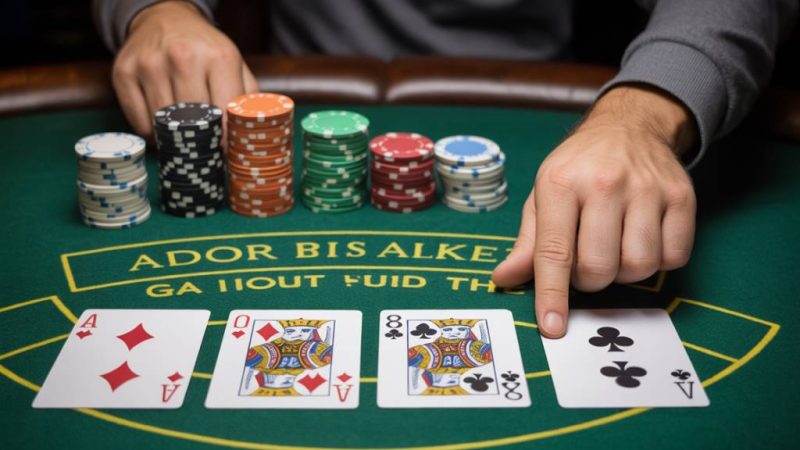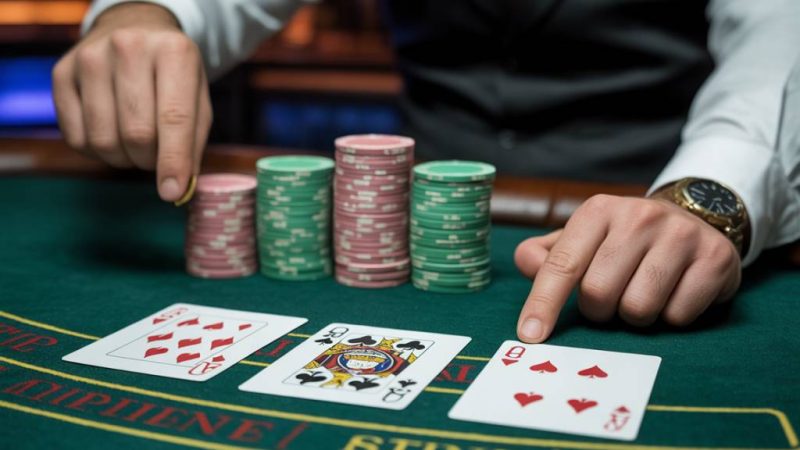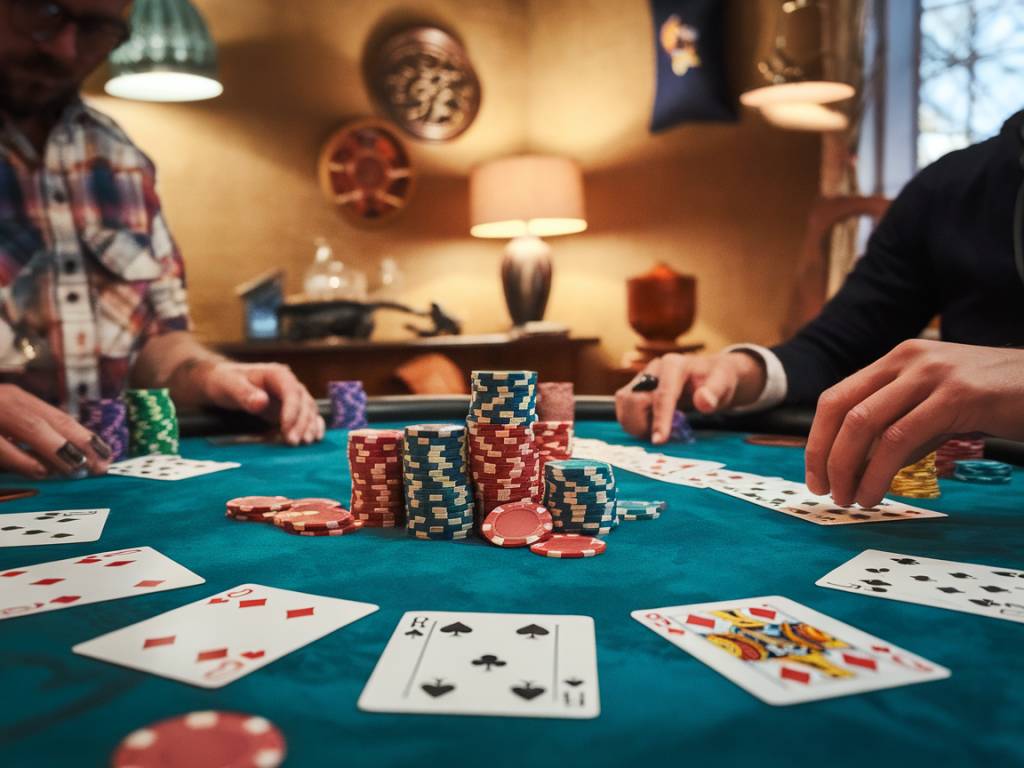How can you have 2 pairs in Texas Hold ’em?

Hey everyone! It’s Mason here, your favorite poker aficionado. Today, we’re diving into the intricacies of Texas Hold ’em and exploring the intriguing hand known as « 2 pairs. » So, grab your decks, shuffle up, and let’s get into it! 🎴♠️
Understanding the Basics of Texas Hold ’em
Before we delve into the specifics of obtaining 2 pairs in Texas Hold ’em, it’s crucial to understand the basic rules and structure of the game. Texas Hold ’em is typically played with 2 to 10 players, and the objective is to form the best five-card hand possible using a combination of your two private « hole cards » and five community cards.
The game is played in several stages: pre-flop, flop, turn, and river, each offering opportunities to bet, check, raise, or fold. A round of betting happens after each stage, starting with the forced bets: the small blind and the big blind.
Formation of Hands in Texas Hold ’em
In Texas Hold ’em, the ranking of possible hands ranges from the incredibly rare Royal Flush to the lowly High Card. In the middle of this spectrum lies the 2 pairs hand, which is stronger than a single pair but weaker than three of a kind.
The hierarchy of poker hands is essential because it dictates the strategy and betting decisions you’ll make throughout the hand. Here’s a quick refresher on hand rankings:
What is a 2 Pairs Hand?
A 2 pairs hand consists of two separate pairs of cards along with a fifth card known as the kicker. For example, if you have two aces and two kings, plus any fifth card, you have two pairs: aces and kings.
Here are a couple of examples to illustrate this:
In the event of a tie, where both players have the same pairs, the kicker is used to determine the winner of the hand.
How to Achieve 2 Pairs in Texas Hold ’em
Aiming for 2 pairs can be a strategic maneuver, and understanding the probabilities and tactics involved can significantly enhance your gameplay.
To achieve two pairs, keep the following strategies in mind:
Play Connectors and Suited Cards
Cards that are consecutive (like 8-9) or suited (same suit) have a higher potential for forming strong hands, including two pairs. Having connectors allows for multiple possibilities to emerge on the flop, turn, and river, increasing your odds to form two pairs.
Pay Attention to the Board
Observing the community cards (the flop, turn, and river) is vital. Sometimes, the community cards will offer opportunities to form two pairs. For example, if the board shows a pair, and you have one of those cards in your hole cards, you immediately have two pairs.
When the flop shows possibilities for straights or flushes, stay cautious. A pair could easily be trumped by a more powerful straight or flush made by your opponents.
Avoid Top-Pair Syndrome
While hitting a top pair (one of your hole cards forming a pair with one of the community cards) can be tempting, it’s often essential to aim higher for more secure hands, like two pairs or better. Top pair might not hold up against multiple opponents, especially in multi-way pots.
Take, for example, a situation where you’re holding A♠ K♥, and the flop shows A♦ 7♣ 2♠. Sure, you’ve got top pair with an ace, but that K kicker doesn’t guarantee you’ll win the pot. Another player might easily have a set (three of a kind) or could outdraw your kicker.
Bluff with Care
Effective bluffing is an art that can trick your opponents into folding better hands, allowing you to take down pots when you technically may not have the best hand. However, bluffing with just a single pair can be risky. Aim to represent a stronger hand, like two pairs or better, and be cautious about your timing.
For example, if you’re holding 8♠ 6♠ and the flop comes Q♠ 6♥ 6♦, you’ve hit trips. A bluff here would be inappropriate as your hand is already strong, but if you’re representing two pairs, be sure that the board and your betting patterns align with that story.
How to Play 2 Pairs Strategically
Once you’ve achieved two pairs, the next challenge is to play them effectively to maximize your winnings and minimize your losses. Here are some strategic tips:
Value Betting
When you have two pairs, your aim should often include value betting—betting amounts that encourage your opponents to call with worse hands, ultimately adding more chips to the pot you plan to win.
Effective value betting requires excellent understanding of your opponents’ likely hands. If you believe they could be holding top pairs or lower pairs, small, controlled bets might entice them to call down to the river.
Pot Control
While two pairs can be strong, they can also be beaten by various hands like straights, flushes, and sets. Practicing pot control means keeping the pot size manageable to avoid losing a large amount of chips if your two pairs get outdrawn. If the board is particularly wet (i.e., full of possible straights or flushes), consider checking or making smaller bets to keep the pot under control.
Reading Opponents
Observing and understanding your opponents’ betting patterns, body language, and tendencies can be invaluable. Some players bet aggressively when they hit two pairs, while others might slow play. Knowing how your opponents typically play can help you make the right decisions.
For instance, if a player frequently checks and calls bets when they have a medium-strength hand like two pairs, you can exploit this by betting larger amounts when you have a stronger hand. Conversely, if they are very aggressive, consider playing more cautiously when facing significant bets.
The Impact of Position
Being in a favorable position can greatly enhance the value of your two pairs. The position refers to where you act in the betting order, and being in a late position (i.e., being one of the last to act) gives you more information to base your decisions on.
Early Position
When you’re acting early in the betting round, it’s riskier to bet heavily with two pairs because you don’t have information on how others will act. Consider making smaller, more controlled bets to avoid getting trapped in a large pot with marginal holdings.
Late Position
If you’re in a late position, you’ve observed how your opponents have acted before it’s your turn. This allows you to make more informed bets and raises, maximizing your two pairs’ value. In this scenario, you can confidently make larger value bets, taking advantage of your strong hand.
So there you have it, folks—achieving two pairs in Texas Hold ’em boils down to a mix of luck, strategy, and keen observation. Keep these tips and strategies in mind, and you’ll find yourself navigating the poker tables with more confidence and skill. 🎰🃏 Good luck out there, and may your poker hands be ever in your favor!
If you’re interested in taking your Texas Hold ’em game to the next level, consider investing in some quality poker gear. From premium card decks to professional-grade poker chips, having the right tools can elevate your gaming experience. Happy playing! 🃎🤑






